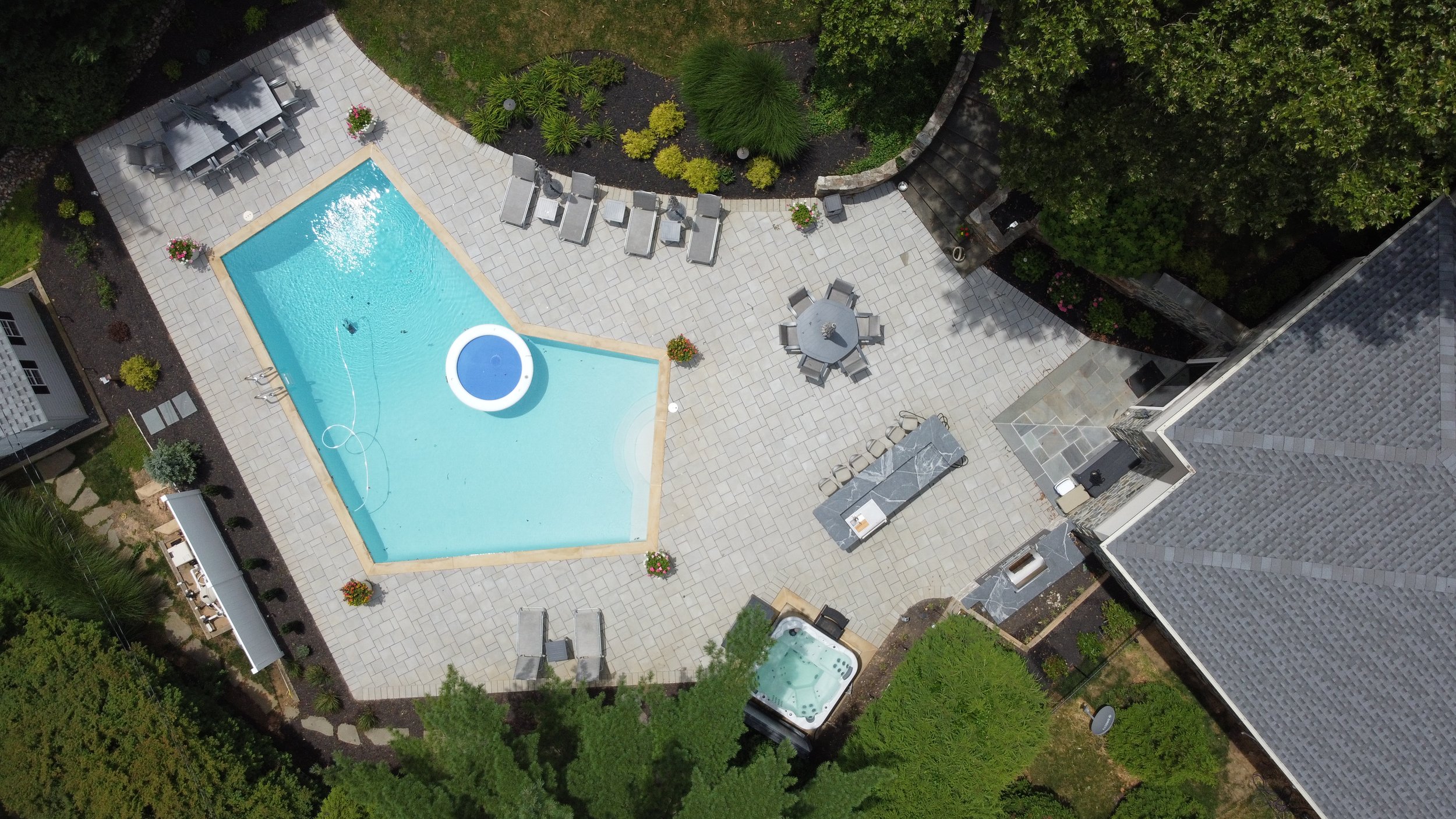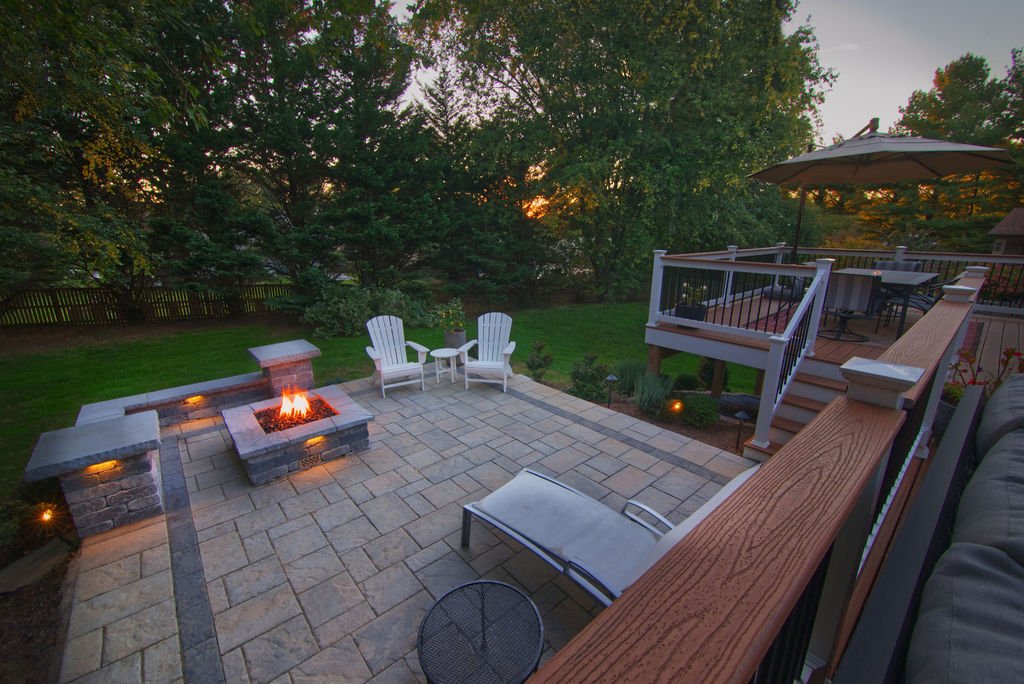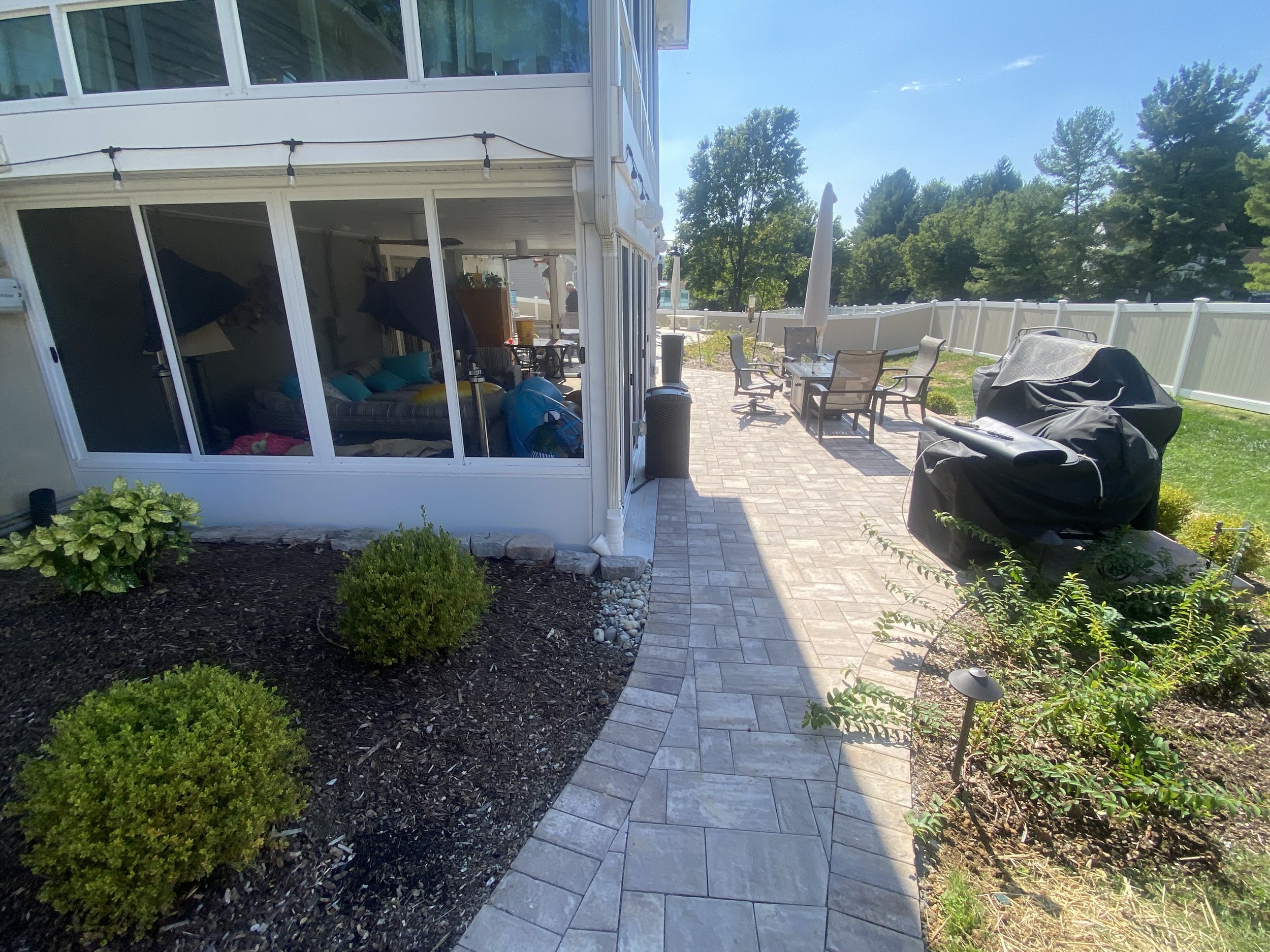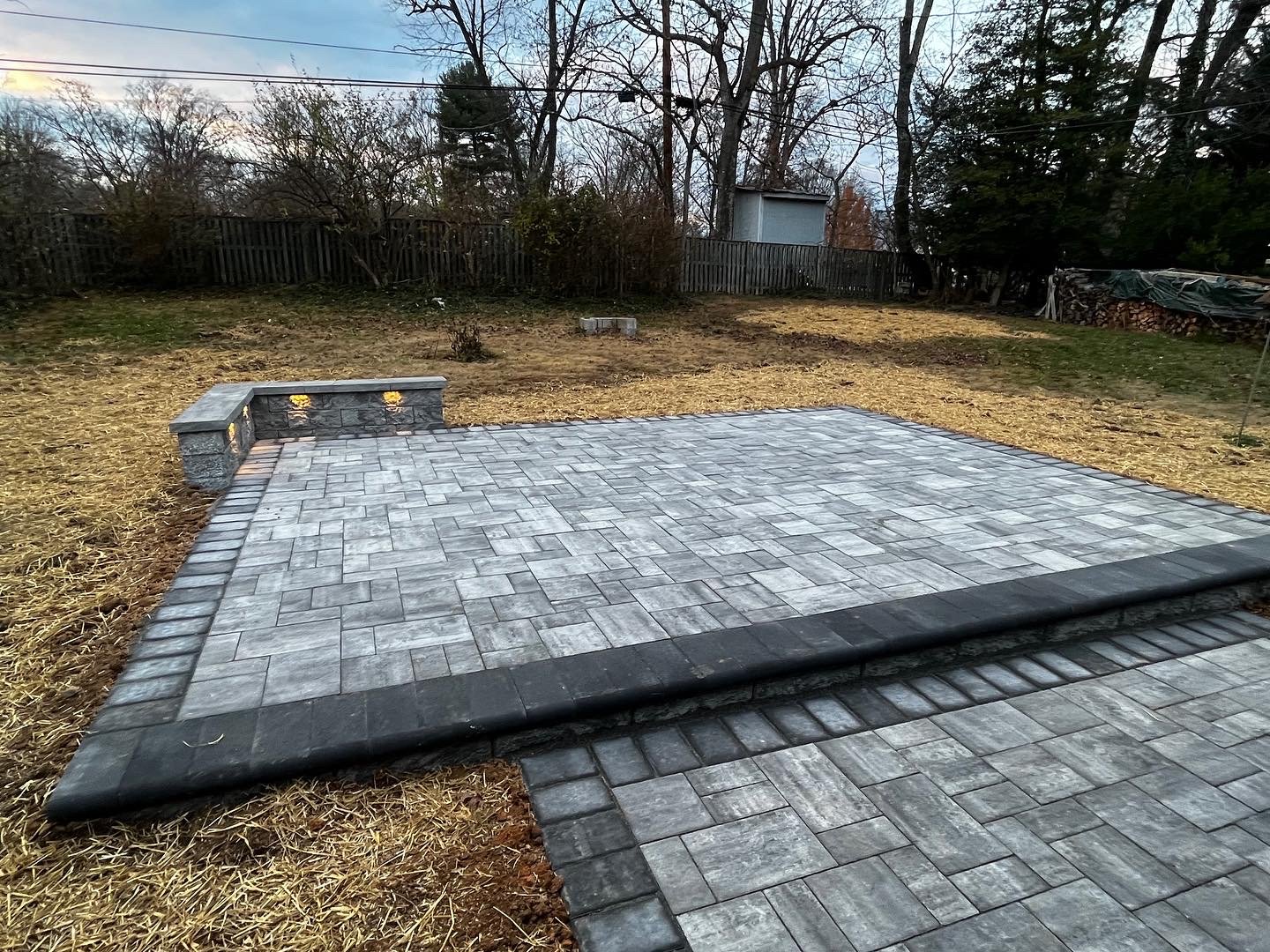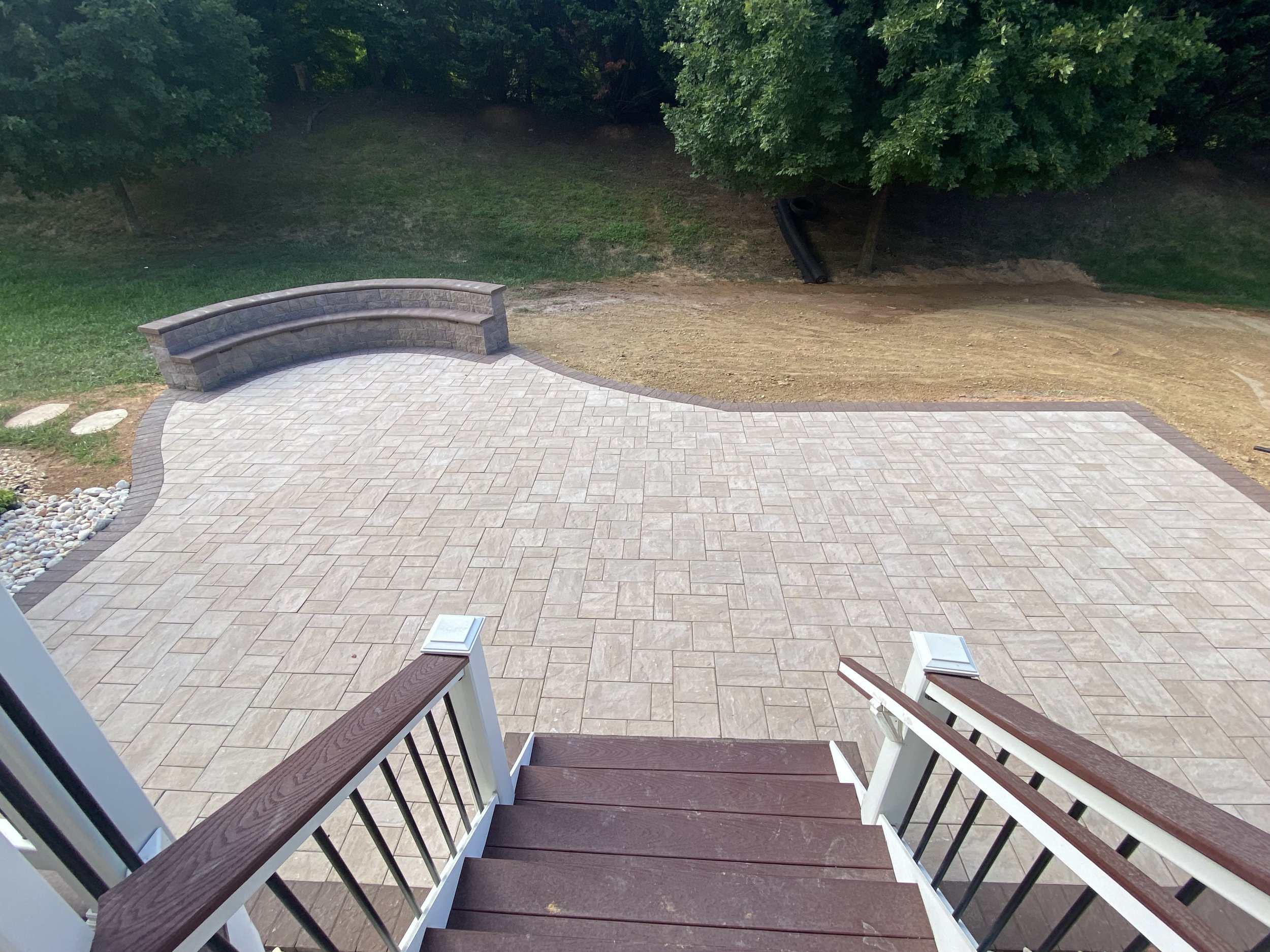5 Decisions to Select Pavers for Your New Patio
Find Your Style
There are many, many options available to you when in comes to selecting pavers for your patio and outdoor living space. It is actually overwhelming, but there are 5 decisions to make it easy to select pavers for your patio. In Maryland there are no less than 7 manufactures available. Each material producer has a catalog over 100 pages long. What is the difference? They all start to look the same after a while.... right? If you download our idea book you will see quite a variety. We are here to help you plan and design your patio. Schedule a consultation with us to get started.
Decision 1: Texture
The best decision to make first is texture. With so many broad option available, making this decision will immediately eliminate a large part of any catalog. Texture of pavers is generally smooth or natural cleft. Smooth does NOT mean slippery. Think of a regular sidewalk was being smooth. The natural cleft, or slate texture will have a natural stone appearance and have some ridges and variation in the surface. There are also pavers that have a brick look and cobblestone look.Mixing textures throughout a patio is an option and can be used to further enhance the finished product feel and style. Certain textures are sometimes work better depending on the application and surrounding area of the project. For instance, a modern home with very modern and contemporary style may be more suited for smooth finish paver. Homes with brick or stone on the foundation or situated around more trees and woodlands may be better with a slate texture.
Decision 2: Size and Scale
How big is the job? For large patios and wide open areas it is typically best to use a larger format paver. Sometimes considered a slab size, large pavers will cover big areas and match the scale of the project. When doing smaller areas or walkways its often better to look at something in a smaller format. Modular systems are extremely popular and are the best way to do a paver installation. Modular sets are typically a mix of large rectangles, squares, and little rectangles with the little rectangle plus the square equaling the large square in size.Two things to keep in mind. For slabs it is best to not go over 21"x14" as the largest size in the mix. The pavers will get weak as the surface area increases and are strong enough up to a point for patio applications. If you are doing a driveway, it is best to stay smaller. For vehicular loads keep the max size to about 12'x12".Mixing sizes for different zones of an outdoor living space and doing inlays and borders will create some additional style to your project. So, there is nothing wrong with mixing up some things - variety is the spice of life!
Decision 3: Color
There are not shortage of color options and once you have a texture and size format selected you will have not problem finding it in a color you like. In fact, most manufacturers will make their entire line in the same range of colors. Most companies in the paver industry have very similar color offerings as well. So it is very unlikely you get stuck here. Pick out the color based on what you like and what goes with the house. Natural tones and neutral colors are great choices. A solid color and / or contrasting border is great. Dark borders form up the space and create a defined line setting the edge of the hardscape.
Decision 4: Availability
Quite simply, get your preferences from the above 3 decisions and then see what is generally available. Some products and styles are easy to get and in stock at local suppliers. Others are going to be special order, meaning you buy whole pallets and if you run out of material it means waiting until its ordered and delivered again. Some manufacturers have local supply yards and depots which make things much easier. Staying away from special order items is a good decision. Our project portfolio highlights materials that are readily available.
Decision 5: Cost vs Quality
The biggest key to success here is making sure you your pavers are professional grade. NOT pavers from the home improvement or big box store. A standard paver is 60 millimeters (homework assignment: convert to inches) thick. The difference in quality will be in the density of the paver. Of course every company will tell you why their product is the best. This is a very competitive industry and that is good for the end user. Some are going to be rated as rock salt resistant. Most companies have their own brand of protection which they say will make the paver keep its color longer. However, not all products from the manufacturer will have that protection.Typically the price difference from a lower quality paver to a higher quality is rather small. The cost is especially small when compared to the overall cost of a project. The same excavation, site preparation, base preparation, screed, and joint fill are used. Do not go cheap on the pavers. But, you do not have to go over the top either.
Summary
There are plenty of options, but do not get overwhelmed. Start at the top with question 1 and move through the list to get your selection narrowed down. Have a look at some of the most popular products to see what the pavers that area leading the industry right now. Get in contact with us to request some samples or get pointed to a showroom and displays.


